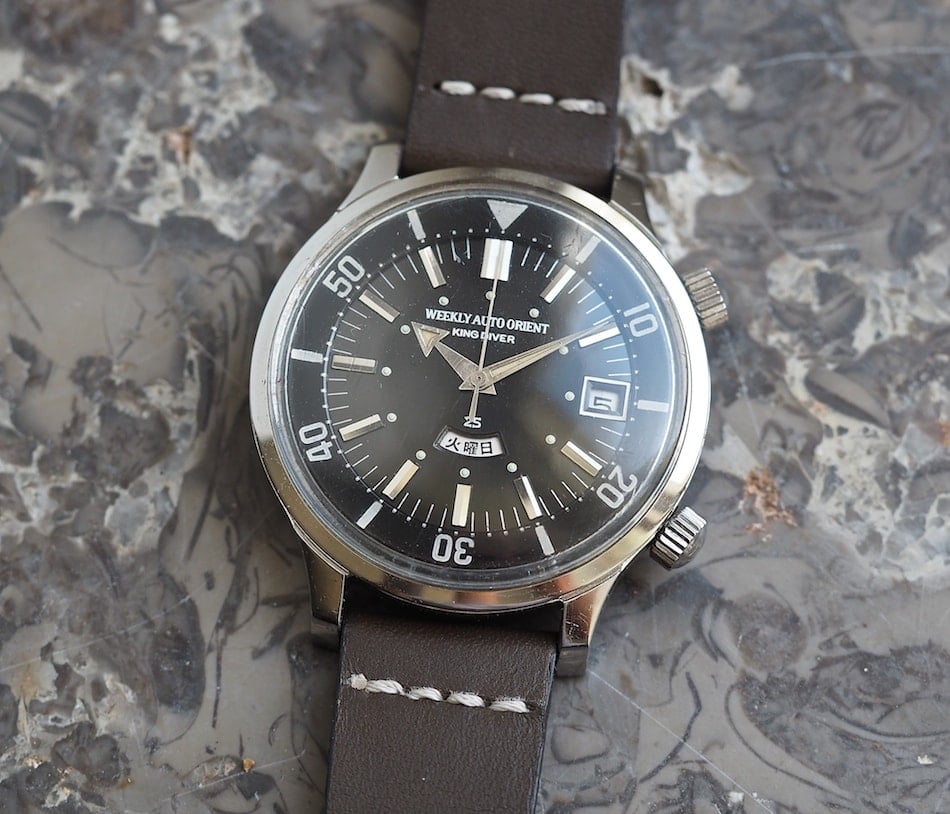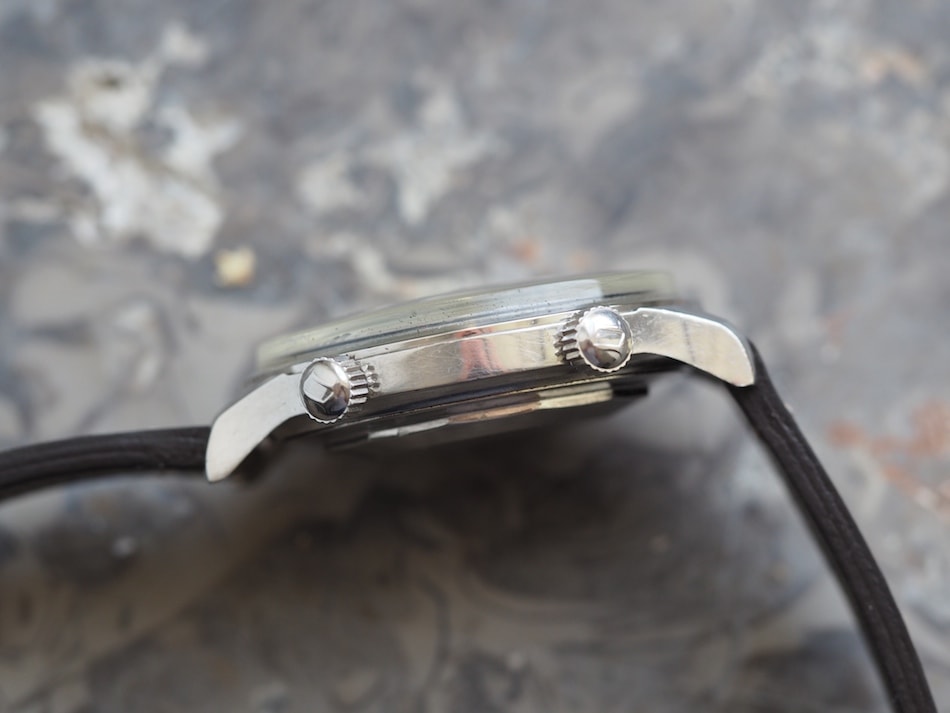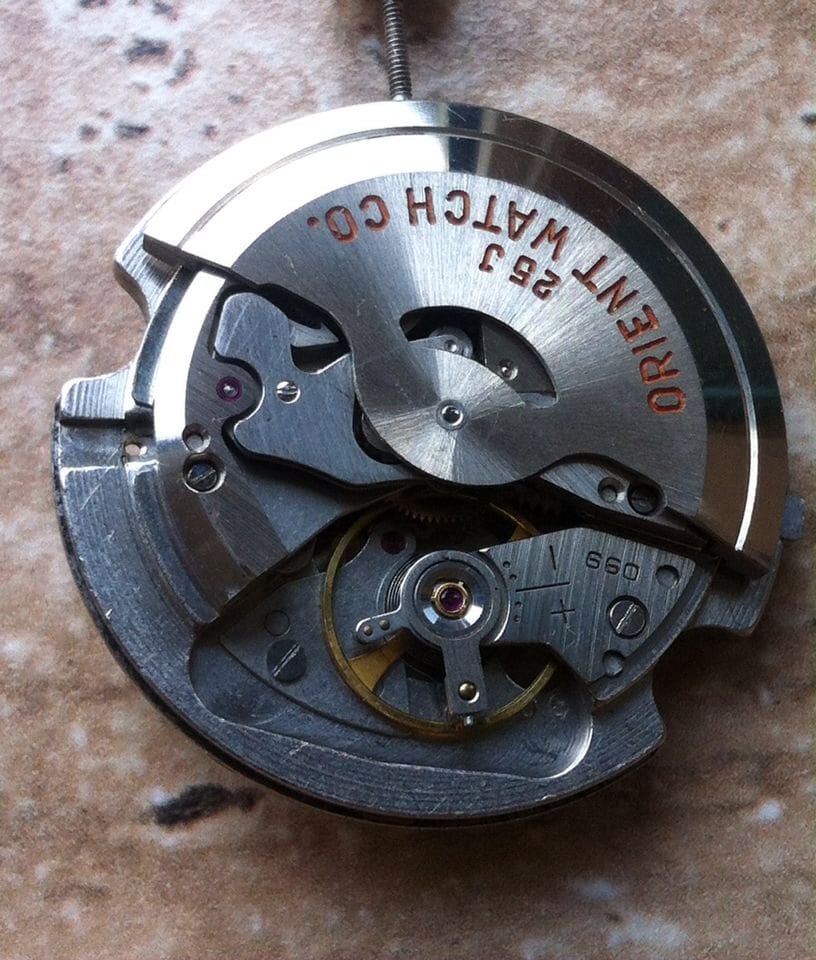#TBT Weekly Auto Orient King Diver – A Rare Japanese Bird
Perhaps I’ve chosen to feature the Weekly Auto Orient King Diver on #TBT this week because I’m traveling through China. As I sat up on an upper floor of a hotel on the Island side of Hong Kong looking directly at TST and Kowloon, I researched these relatively obscure watches and, amusingly, the only pieces I found for sale were on eBay and located in – you guessed it, Kowloon. Orient is one of those Japanese brands that receives relatively little press outside of Asia and the vintage models even less so. Today, though, we’ll reverse that with a look at one of the brand’s earliest ventures into “dive” watches with the model you see here. In fact, today’s piece formed the foundation for a well-known model line that is beloved by Orient collectors and supporters. First, though, let’s talk about the company.
Orient Watch Company

Founded in 1950, the Orient Watch Company hails from Tokyo, Japan. The firm can actually trace its roots back to 1901 when Shogoro Yoshida opened a shop selling pocket watches. He ultimately began making watch cases, gauges and clocks before World War 2 effectively ended his business. After, the war, though, the company reformed as Orient and things began to boom. The watches were quite popular in Japan and also in China and boasted a high-end line, which still exists today, called Royal Orient. If you think along the lines of King or Grand Seiko or the recently reviewed Citizen Chrono Master, then you’re in the right ballpark as far as quality. The brand manufactured its own movements but did incorporate Seiko base movements into some of its watches by the 1970’s. In 2009, Orient became an official division of the Seiko Epson Company, but in true Japanese fashion, the Seiko brand and Orient are kept quite separate. Back in the 1960’s, though, there was no connection and that’s the timeframe of where we’ll focus today with the Weekly Auto Orient King Diver.

Weekly Auto Orient King Diver Review
We’ve now reviewed examples of the Seiko Silver Wave and the Citizen Para Water Uni: 2 great examples of “light divers” from the mid-1960’s that made do with something between 30 and 50M of water resistance. Despite the fact that you rarely hear of Orient in the same conversation, the brand also entered the market with the Weekly Auto Orient King Diver (ref.19410) we see here and gave it both a day and date feature along with an internal rotating bezel.

King Diver
The introduction of the Weekly Auto Orient King Diver model started the King Diver line, one of the brand’s most popular and one that is still around today in a form that somewhat resembles this piece. Also, as an FYI, a date-only version was also available and known as the Full Auto Orient. While the names of these models are in English, I think you’d agree that the nomenclature makes them sound quite Japanese.

The Weekly Auto Orient King Diver is a Big Watch
When comparing the Weekly Auto Orient King Diver with its Seiko and Citizen counterparts, the first thing you might notice is that this watch even more closely follows the looks of the EPSA-cased Super Compressors of the same era. Here’s another thing, unlike the two aforementioned brands, the Orient is a big watch. The stainless-cased piece comes in at a bit over 42mm and is a massive 50mm lug to lug. Lug width is typical of the era at 19mm and the thickness due to the massive acrylic crystal with its nearly vertical sides comes in at 13.75mm. It’s somewhat amusing that such an imposing and utile-looking watch comes in with such light water resistance (I believe it was rated to 50M), but it reminds us that real divers were still not commonplace in those times.

Arrow Shaped Hour Hand
Looking head-on at the Weekly Auto Orient King Diver shows a gloss black dial with applied indices, lume dots on the inner circumference of these, and lumed-pointed hands. The hour hand is of particular note due with its arrow shape.

Japanese Kanji
The rotating inner bezel on the Weekly Auto Orient King Diver looks as if it means business as well and can be turned using the signed top crown. Both the date and day wheels are with the black lettering/numbering on a white background. Nothing is quickset, but each switches nicely at the stroke of midnight. While I certainly don’t read Japanese Kanji, it’s a super cool feature that tells you this particular model wasn’t meant for export.

Orient’s First-ever Automatic Movement
Researching vintage Orient is challenging to say the least – as an example, there’s no serial number dating system as in the other big Japanese brands. There are plenty of fans, but there’s a lot less detail out there versus something like Seiko. So, when I found this Weekly Auto Orient King Diver in Japan, I was aware that it had some issues. Frankly, it wasn’t working very well, so off it went for a service. After diagnosis, it was found that the 25 jewel movement needed a new “setting spring.” Now, for a Seiko, that’s a relatively easy fix especially if the watch comes from mid-60’s or beyond. With an Orient, though, it’s a bit of a maze because of the lack of information online in English plus the fact that one likely has to scour Japanese sites for parts – and, yeah, they’re not English. What I did find out after posting a question on the Seiko Citizen Watch Site is that the King Diver uses the brand’s first-ever automatic and that the self-winding mechanism was placed on top of a Royal Orient manual wind movement. The self-winding mechanism also seemed to crib from IWC in its use of the Pellaton winding system, which you can read more about here. It was all pretty interesting, but in the end, I had to buy what was admittedly a relatively pretty gold-plated Orient as a donor. Thankfully, it all worked out and the watch now runs beautifully and keeps great time.

Market Value
Now, the fact that you’ve only likely heard of Orient and may have never seen an example of the Weekly Auto Orient King Diver may further lead you to think that this is an inexpensive watch. Think again. Due to their size, rarity and simple 60’s good looks, it’s not uncommon for these watches to sell for $1,200 – 1,600 in nice condition. So, here we have a less known brand when compared to either Seiko or Citizen, but yet the Orient commands more than similar models from the same era.

(As an aside, Orient made another diver known as the Olympia with an external bezel – seen above courtesy of collector Patrick Tacq – that commands even more on the market.) If this seems like too much, consider a later model King Diver to see if you like the general build quality and size as you can often find them for $200-300. Whichever you choose, they’re neat watches. Be on the lookout for water entry, changed parts, exposed base metal on things like bezels, and the like. Parts, in my estimation, are not so easy to source unless a donor is found. My acrylic crystal, for example, is crazed and I have no idea how to find another, so the watch will be babied.

The Weekly Auto Orient King Diver is yet another worthwhile watch from the 1960’s out of Japan. As mentioned, this is a rather “Asian” watch and most still reside there, but it has great looks, a relatively innovative movement (even if it was invented elsewhere), and a large size. This is my first Orient, but it probably won’t be my last.













